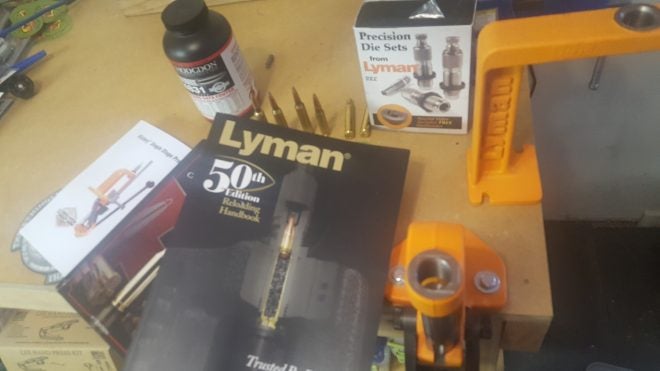Welcome to our first post on the basics of reloading. The good people at LYMAN have teamed up with TFB to help create a guide for those interested in reloading. With a relatively small upfront investment, you can reload rounds for pennies on the dollar. With a few fundamentals and a little experience, you can be loading a specific load for a specific barrel and be getting consistent accuracy, again for pennies on the dollar.
Why reload? Well beyond the above mentioned financial motivator, I believe the biggest benefit is knowledge. When reloading, you really start understanding the ballistics, pressures, and the action of firing a round. For me, I never understood my firearms to the level I did until after reloading. Another added benefit is your “unloading’ gets better.
What You Need
In this series, we will discuss the basics, fundamentals, and safety of beginning reloading. We will start with required equipment and processes for doing handgun loads. After going through all essential steps, and building a solid foundation, we will then discuss moving on to rifle rounds.
For the initial handgun load, I will use the .45ACP. I am not going to debate why the .45ACP is FAR SUPERIOR to 9mm–my beliefs have no bearing on this series.
Manual
First and foremost, get a manual. The LYMAN manual is a solid reference to have. As a beginner, I want you to sit down and read it. Don’t worry, most the book is load data. Read the first section. Get your fundamentals down; it will really pay off down the road. The more manuals you own, the more data you have to reference so it will not take long before you have multiple manuals.
Reloading Press
You are going to need a press. We are going to be doing all these articles with the LYMAN Brass Smith Ideal press. I recommend it strongly; it is bulletproof and will reload all pistol and up to the largest of rifle rounds (Lyman told me they reloaded a .338 Lapua) Even if you graduate to a huge progressive setup, you will always want to have a single stage set up somewhere. You are also going to need a bench to mount the press make sure it is solid. I lag bolt mine to the wall to prevent any movement when cranking on the press.
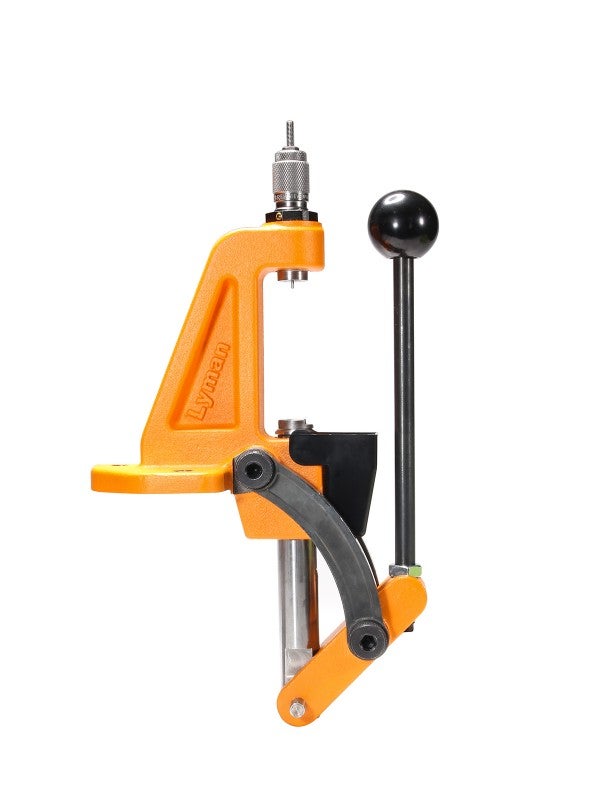
Die set
You will need a set of dies for each caliber you are to reload. Dies are caliber specific, and each one has a specific task in prepping and processing your case. Each die will be discussed in its stage of the reload. You will want to clean your dies after each use, specifically the resizer die. Getting a case stuck in a die is an ordeal. So, clean them. ( I use cheap brake cleaner and a brush)

Brand new Lyman 4 piece Die Set
Case Lubricant
No not that water based stuff you order in mass from Amazon, this is reloading specific. Many on the market. There are a few do’s and dont’s however, the type you use is really personal preference.
Case Holder
These attach to the press and hold the case when pressing them. These are case diameter specific. So luckily a specific case holder will work on many cases. The LYMAN precision dies sets come with the appropriate holder for that caliber.
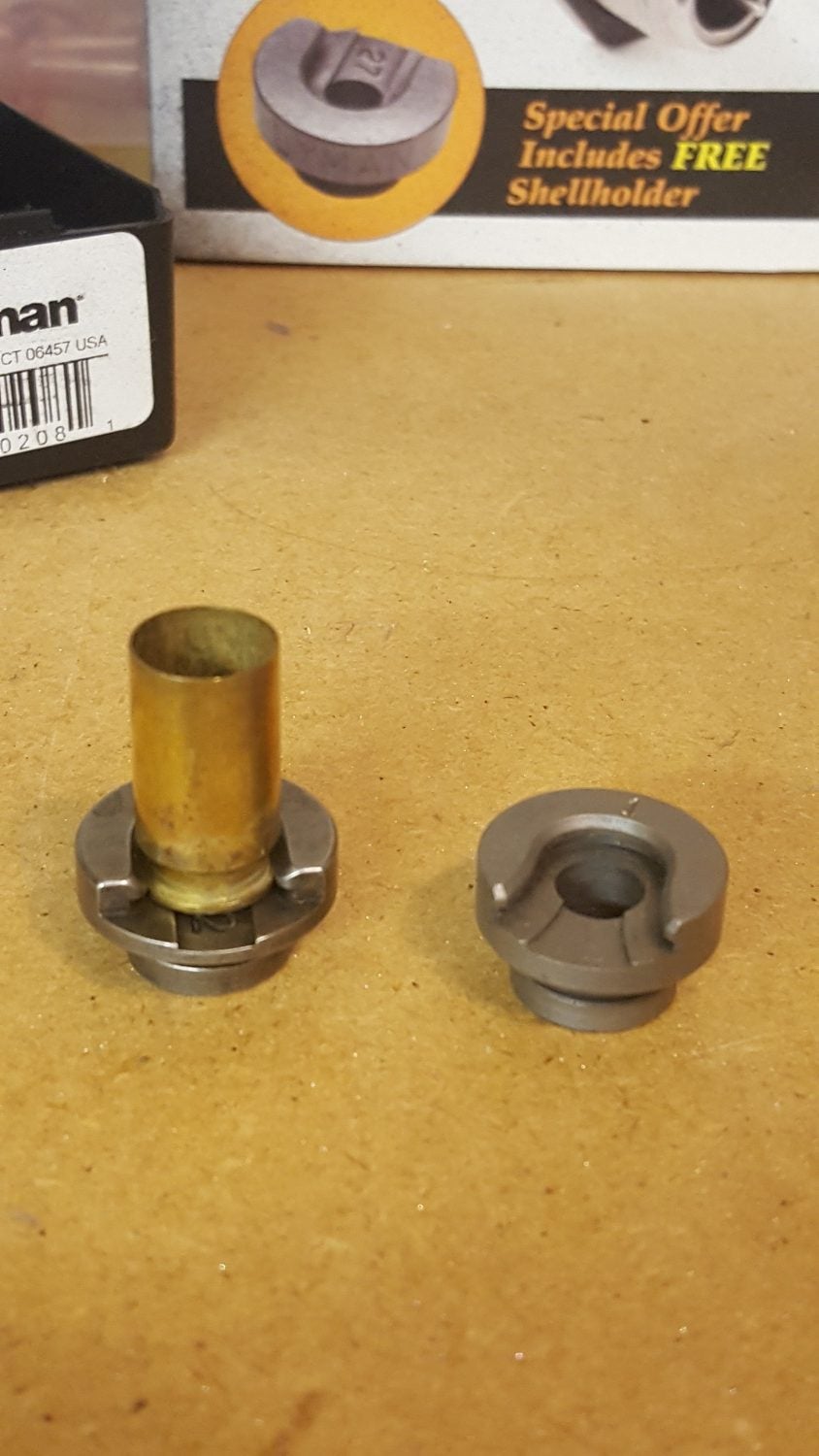
Two of the many case holder i own
Cases
You can buy them new, or pick them up at the range. We will go over inspection later (a critical step). Yes, there are other types of metal cases that are reloadable but as a beginner, stick to brass, learn the basics, and go from there.
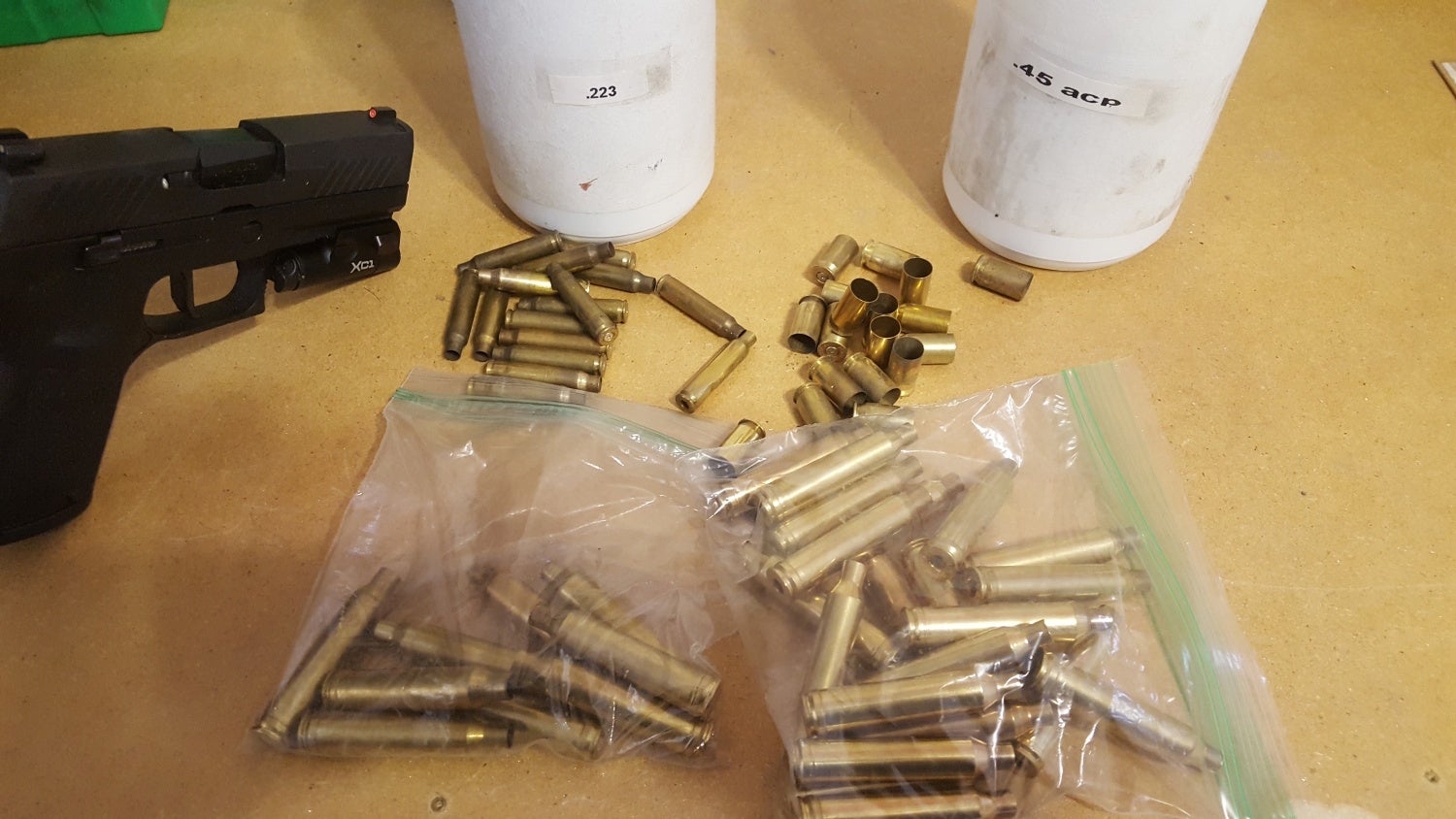
(I separate and store brass I pick up at the range)
Case Cleaner
You can use a vibratory cleaner or a wet tumbler. I own both although I prefer wet tumbling.
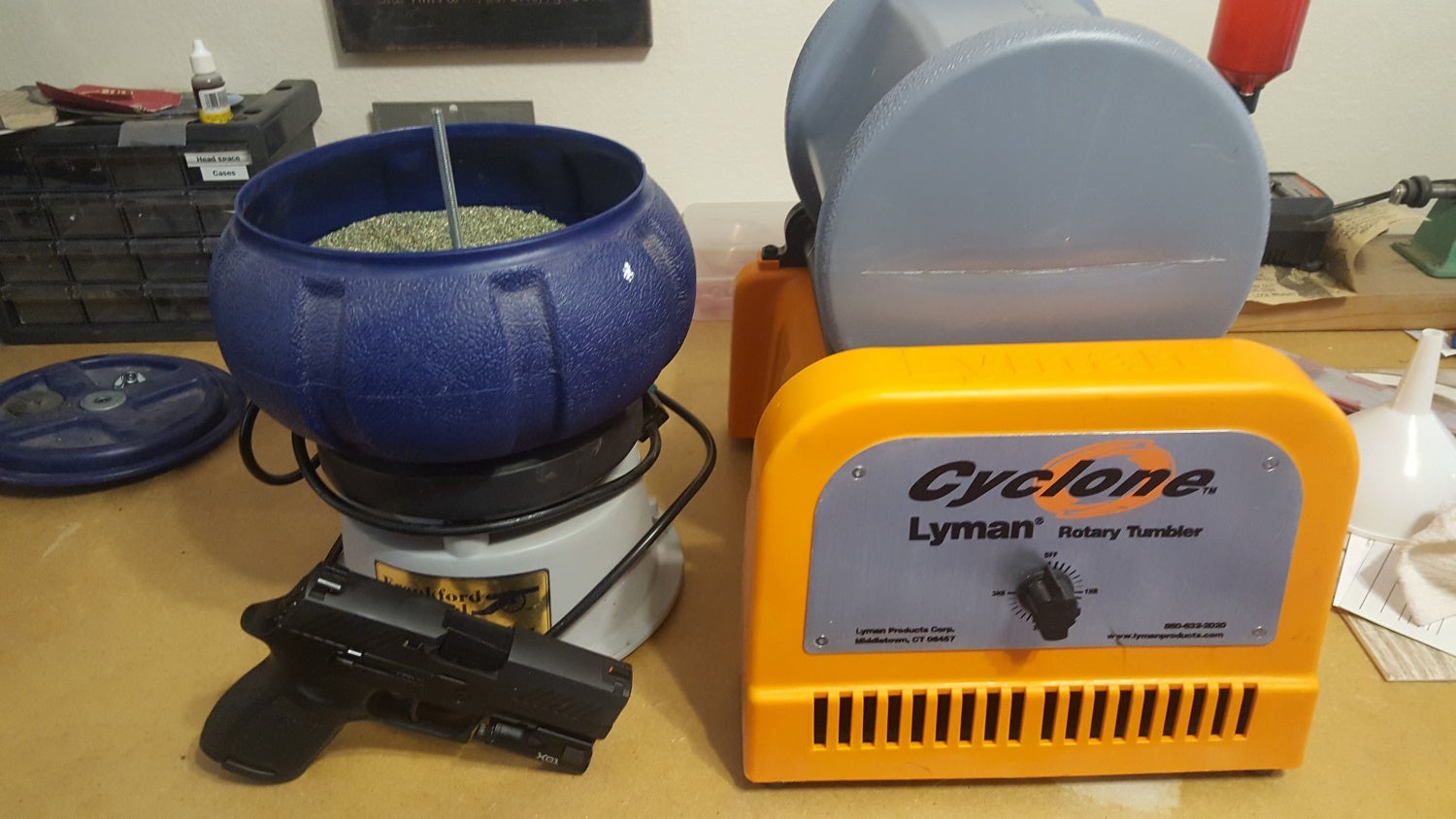
Left, my vibratory cleaner, right is my Lyman Cyclone rotary cleaner (the wet cleaner i use more often)
Bullets
These are the freedom seeds of the “PEW”. Other than different brands, they can be broken down into material, shape, and weight. In this series, I will focus only what is relevant to reloading. What is relevant is the weight. The heavier the bullet the lighter the powder load.
PRIMERS
This is what the firing pin or stryker hits to initiate the combustion of the powder. Load data in your manual will always list what type of primer you need
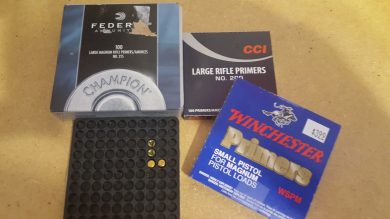
Powder
The soul of our “PEW”. Many, many different powders out there. The difference is judged by the burn rate of the powder. The faster a powder burns, the faster the pressure builds within the chamber, and subsequently, the barrel. Keeping your pressures within safe parameters is a necessity. Although there are many burn rate charts available, as a beginner you don’t need to worry about them. Simply look at your manual and only load the powders listed in the data.
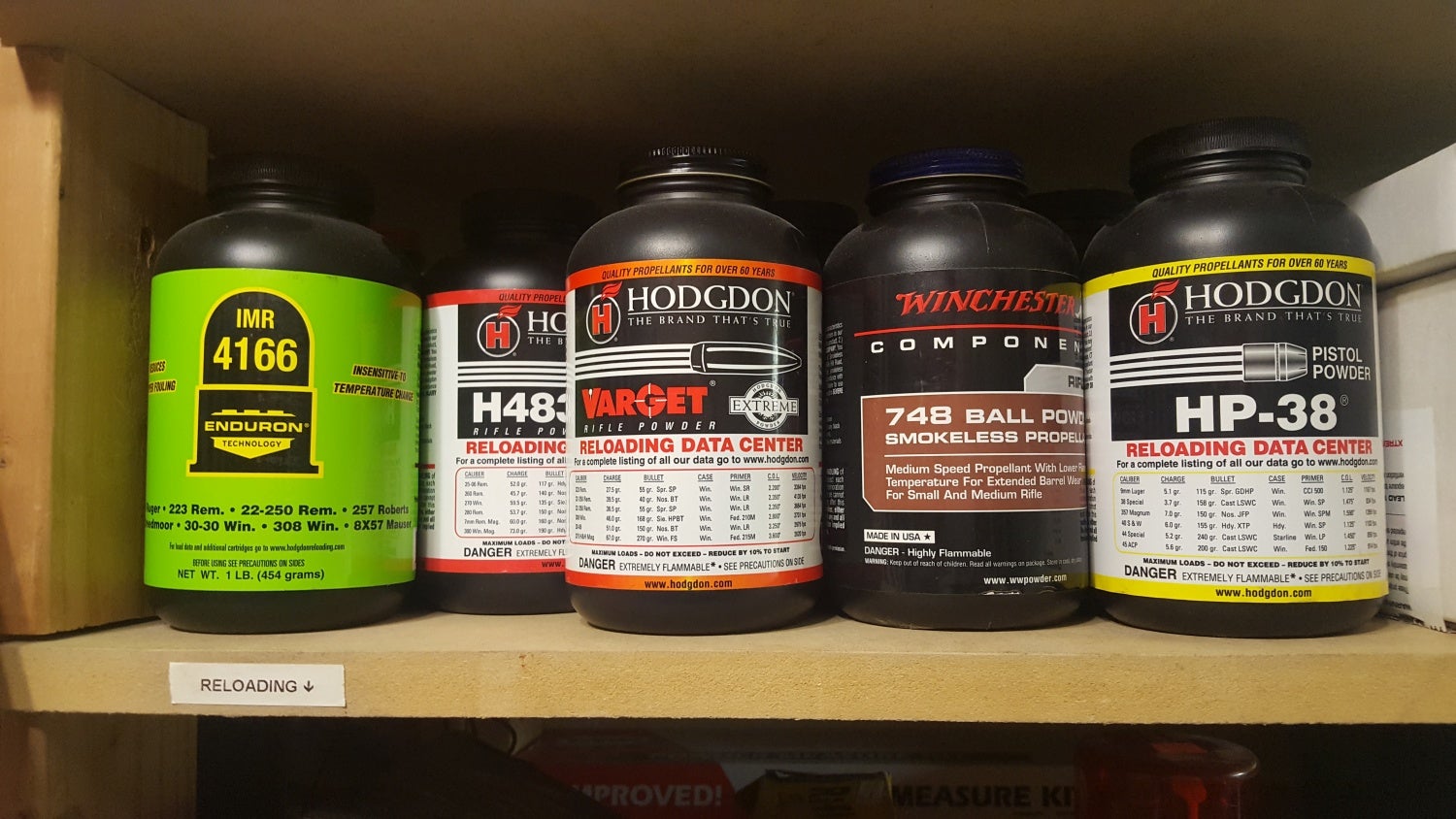
An example of powders I have
Scale
A scale either digital or balance you need to be consistent and accurate with your powder. I have always felt more comfortable with a digital scale verse a balance scale. Personal preference here.
CLOSING
Thank you TFB for inviting me to write this series and share my knowledge (obsession) with the TFB community! Thank you LYMAN for sending me the equipment for this series. I’m really looking forward to geeking out with it. Most of all, thank you, readers. You make it all happen and have allowed me to be invited back. I hope to entertain you a little, teach you a lot, and encourage you to cross over into the reloading world. Like I said before, in reloading you never stop learning! I look forward to your feedback and encourage friendly banter. Here’s to the “PEW”!
Again this is a multipart series. The next installment will be out in a couple of weeks and will cover inspection, depriming, and cleaning–the prep work you need to do to start the process. If you are interested in following along, make sure to, at the very least, get the manual. As far as the other gear this is what will be used in this series (disclosure: the below are affiliate links that help support the site):
- Lyman 50th Edition Reloading Manual
- Lyman – Brass Smith Single Stage Press
- Lyman – Reloading Dies
- Lyman – Quick Slick Spray Lube
- Lyman – Cyclone Rotary Tumbler
- Brass Cases
- Bullets
- Powder – make sure you follow the manual for the right powder for your cartridge
Disclaimer; Lyman has provided me a number of the products used in this series
 Your Privacy Choices
Your Privacy Choices
